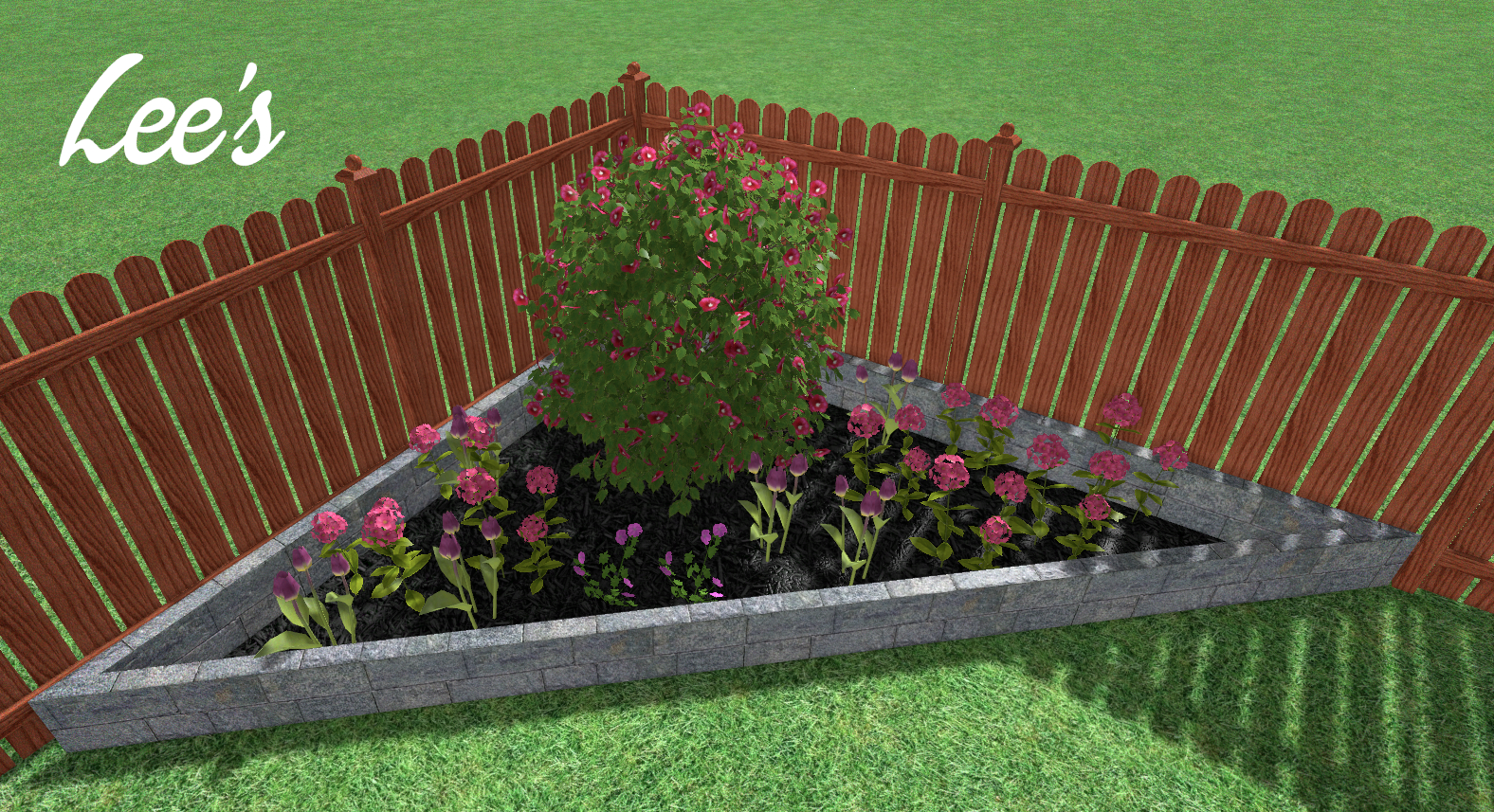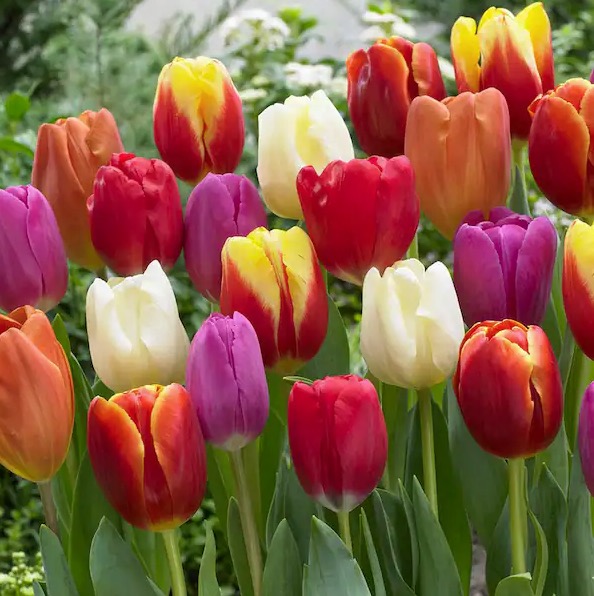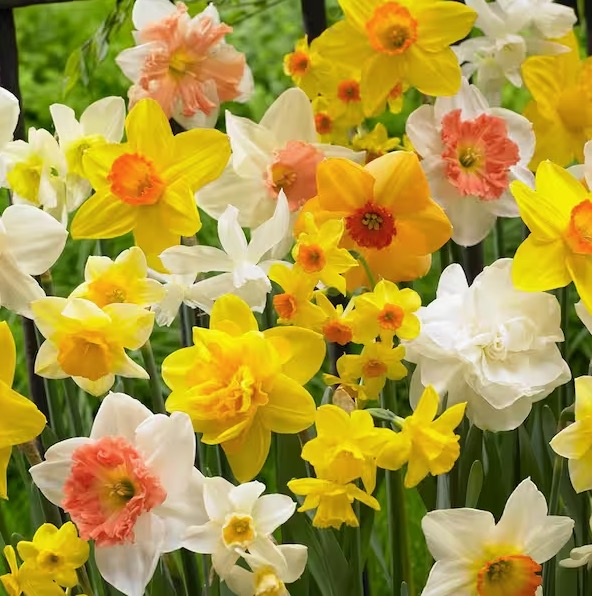Like a painter’s palette, each flower adds its unique color and character to the landscape.
- Local Adaptability: These flowers thrive in Seattle’s mild, moist climate and can withstand its seasonal variations.
- Ecological Benefits: Many of these flowers attract pollinators, contributing to biodiversity and ecosystem health.
- Photo Credits: Check out Home Depot for the latest selection of home and garden

As a beginner, navigating the world of flowers can be overwhelming, but with so many stunning options, it’s worth the journey! Seattle gardens are a haven for flower enthusiasts, and these top 10 picks not only add vibrancy to your outdoor space but also provide ecological advantages.

1. Tulip (Tulipa spp.)
- Why It’s Used:
- Spring Bloomer: Tulips are one of the first flowers to bloom in spring, bringing vibrant color after the winter.
- Variety: Available in numerous colors and shapes, allowing for creative garden designs.
- Benefits:
- Easy to plant and care for, making them suitable for novice gardeners.
- Great for mass plantings, borders, or mixed flower beds.
- Visit Home Depot for more info

2. Daffodil (Narcissus spp.)
- Why It’s Used:
- Naturalizing Ability: Daffodils multiply over time and can return year after year.
- Deer and Rodent Resistant: Their strong scent deters animals from eating them.
- Visit Home Depot for more info
- Benefits:
- Provides cheerful yellow blooms in early spring, brightening up gardens.
- Ideal for naturalized areas and perennial borders.
- Visit Home Depot for more info

3. Peony (Paeonia spp.)
- Why It’s Used:
- Large, Fragrant Blooms: Peonies are known for their showy flowers and delightful fragrance.
- Longevity: Can thrive for decades, making them a long-term investment for gardens.
- Benefits:
- Attracts pollinators and adds elegance to gardens with lush blooms.
- Great for cutting and bringing indoors.
- Visit Home Depot for more info

4. Hydrangea (Hydrangea spp.)
- Why It’s Used:
- Colorful Blooms: Offers a range of colors from pink to blue, depending on soil pH, adding versatility to garden designs.
- Long Blooming Period: Blooms from mid-summer to fall, providing color for an extended period.
- Benefits:
- Thrives in Seattle’s moist climate, requiring regular watering but flourishing in the right conditions.
- Ideal for foundation plantings and mixed borders.
- Visit Home Depot for more info

5. Lavender (Lavandula spp.)
- Why It’s Used:
- Fragrant Foliage: Known for its soothing scent, lavender adds a sensory element to gardens.
- Pollinator Friendly: Attracts bees and butterflies, enhancing the biodiversity of gardens.
- Benefits:
- Drought-resistant once established, making it a low-maintenance choice.
- Great for borders, herb gardens, and cottage-style gardens.
- Visit Home Depot for more info

6. Zinnia (Zinnia elegans)
- Why It’s Used:
- Vibrant Colors: Available in a wide range of bright colors, zinnias bring cheer to any garden.
- Easy to Grow: Fast-growing and tolerant of heat, making them suitable for Seattle’s summers.
- Benefits:
- Attracts butterflies, making gardens more lively.
- Ideal for cut flower arrangements due to their long-lasting blooms.
- Visit Home Depot for more info

7. Rudbeckia (Black-eyed Susan) (Rudbeckia hirta)
- Why It’s Used:
- Bold, Sunny Blooms: The bright yellow flowers with dark centers add color and vibrancy to gardens.
- Resilient: Tolerates various soil types and conditions, thriving in full sun to partial shade.
- Benefits:
- Blooms from summer to early fall, extending the color in gardens.
- Excellent for naturalistic and cottage-style gardens.
- Visit Home Depot for more info

8. Salvia (Salvia spp.)
- Why It’s Used:
- Attractive to Pollinators: Known for attracting bees, butterflies, and hummingbirds.
- Long Bloom Time: Provides blooms from late spring through summer.
- Benefits:
- Drought-tolerant and hardy, making it suitable for low-maintenance gardens.
- Adds vertical interest with its tall flower spikes.
- Visit Home Depot for more info

9. Coreopsis (Coreopsis spp.)
- Why It’s Used:
- Bright, Cheerful Flowers: Offers sunny yellow blooms that brighten up any garden space.
- Long Blooming Period: Blooms from late spring to fall, providing consistent color.
- Benefits:
- Attracts butterflies and beneficial insects, enhancing garden biodiversity.
- Tolerates poor soil conditions and is drought-resistant once established.
- Visit Home Depot for more info

10. Aster (Aster spp.)
- Why It’s Used:
- Fall Bloomer: Provides color in late summer and fall when many other flowers have faded.
- Diverse Colors: Available in shades of purple, blue, pink, and white, adding variety to the garden.
- Benefits:
- Attracts butterflies and other pollinators, contributing to a healthy ecosystem.
- Great for mixed borders and wildflower gardens.
- Visit Home Depot for more info
Flower Comparison Chart
| Flower | Pros | Cons | Usage |
|---|---|---|---|
| Tulip (Tulipa spp.) | Spring bloomer, bringing vibrant color after winter Available in numerous colors and shapes Easy to plant and care for Great for mass plantings and mixed flower beds | Short blooming period Bulbs can rot in overly wet conditions | Ideal for borders, containers, and seasonal displays |
| Daffodil (Narcissus spp.) | Naturalizes easily and multiplies over time Deer and rodent resistant due to strong scent Cheerful yellow blooms in early spring | Leaves can be unattractive post-bloom May require division every few years for best performance | Perfect for naturalized areas and perennial borders |
| Peony (Paeonia spp.) | Large, fragrant blooms that add elegance Long-lived, thriving for decades Attracts pollinators | Requires well-drained soil to prevent root rot Can be heavy and may require staking | Great for cutting gardens and ornamental landscapes |
| Hydrangea (Hydrangea spp.) | Colorful blooms vary with soil pH Long blooming period from mid-summer to fall Thrives in Seattle’s moist climate | Requires regular watering Can be susceptible to pests and diseases | Ideal for foundation plantings and mixed borders |
| Lavender (Lavandula spp.) | Fragrant foliage adds a sensory element Attracts bees and butterflies Drought-resistant once established | May not thrive in overly wet conditions Requires well-drained soil | Great for borders, herb gardens, and cottage-style gardens |
| Zinnia (Zinnia elegans) | Vibrant colors bring cheer to gardens Easy to grow and heat tolerant Attracts butterflies | Short lifespan; considered annuals May require deadheading for prolonged blooms | Ideal for cut flower arrangements and colorful borders |
| Rudbeckia (Black-eyed Susan) (Rudbeckia hirta) | Bold, sunny blooms add vibrancy Resilient in various soil types and conditions Blooms from summer to early fall | Can self-seed and become invasive Requires full sun for optimal growth | Excellent for naturalistic and cottage-style gardens |
| Salvia (Salvia spp.) | Attractive to pollinators like bees and hummingbirds Long bloom time from late spring to summer Drought-tolerant and hardy | Some varieties can become leggy without pruning May require regular deadheading | Adds vertical interest and color to gardens |
| Coreopsis (Coreopsis spp.) | Bright, cheerful flowers for any garden space Long blooming period from late spring to fall Tolerates poor soil conditions and drought | May require division every few years Some varieties may not be perennial in all regions | Great for mixed borders and wildflower gardens |
| Aster (Aster spp.) | Fall bloomer providing late-season color Diverse colors add variety to the garden Attracts butterflies and other pollinators | May become invasive if not managed Can require staking in windy areas | Excellent for mixed borders and wildflower gardens |
Perennial Flowers
These flowers return year after year:
- Peony (Paeonia spp.) – Perennial
- Hydrangea (Hydrangea spp.) – Perennial
- Lavender (Lavandula spp.) – Perennial
- Rudbeckia (Black-eyed Susan) (Rudbeckia hirta) – Perennial
- Salvia (Salvia spp.) – Perennial
- Coreopsis (Coreopsis spp.) – Perennial
- Aster (Aster spp.) – Perennial
Annual Flowers
These flowers complete their life cycle in one growing season:
- Zinnia (Zinnia elegans) – Annual (though some cultivars can behave as short-lived perennials in certain climates)
Bulbs (Not Annual, Not Perennial)
These flowers typically grow from bulbs and may behave differently based on the climate:
- Tulip (Tulipa spp.) – Considered a bulb (usually treated as annuals in some regions, but they can naturalize and come back for several years if the conditions are right).
- Daffodil (Narcissus spp.) – Considered a bulb (perennial in nature, returning year after year).









.jpg)














